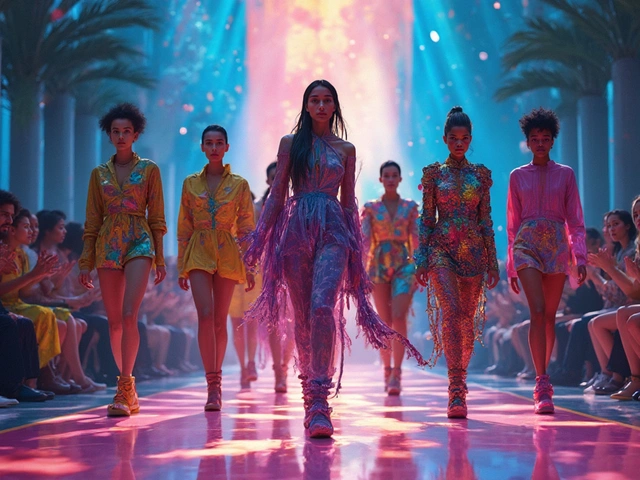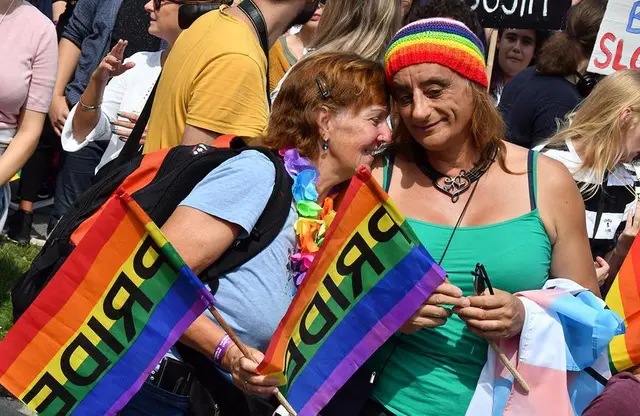Think about the last time you saw a face on a billboard that stopped you in your tracks. Not just pretty-powerful. That’s what a supermodel does. They don’t just walk a runway. They change how the world sees beauty, power, and ambition. In the 1980s and 90s, a handful of women became more than models-they became cultural landmarks. And the reason? It wasn’t just their looks. It was everything else that came with them.
They Were the First True Celebrities of Fashion
Before supermodels, models were background figures. You saw the dress, not the woman. Then came Cindy Crawford, Naomi Campbell, Linda Evangelista, Claudia Schiffer, and Christy Turlington. They didn’t just wear clothes-they owned the moment. They were on magazine covers with presidents. They appeared in music videos with Madonna. They earned $10,000 a day in the early 90s-that’s over $20,000 today, adjusted for inflation. And they didn’t just get paid. They negotiated. They demanded contracts. They launched their own lines. This wasn’t modeling. It was entrepreneurship with eyeliner.
Why ‘Super’? It Wasn’t Just a Buzzword
The term ‘supermodel’ didn’t exist until the late 80s. Before that, models were called ‘girls’ or ‘walkers.’ But when Vogue ran a cover story calling these five women ‘The Supermodels,’ something clicked. The public didn’t just want to see the clothes-they wanted to know the person behind them. Linda Evangelista famously said, ‘We don’t wake up for less than $10,000 a day.’ That quote didn’t just make headlines-it changed the industry’s value system. Models went from being invisible workers to high-value brands. And suddenly, fashion wasn’t just about designers anymore. It was about personalities.
The Faces That Redefined Beauty
Before supermodels, fashion magazines mostly featured one kind of look: thin, white, and quiet. Then came Naomi Campbell-Black, bold, and unapologetic. She broke barriers that had stood for decades. In 1988, she became the first Black woman on the cover of French Vogue. That wasn’t a fluke. It was a statement. Claudia Schiffer brought the Germanic, icy elegance that made her the face of Chanel. Cindy Crawford had the mole, the dimple, the relatable charm. She made high fashion feel like it could belong to the girl next door. And Christy Turlington? She moved like poetry. Her runway walk became the gold standard. These women didn’t fit a mold. They shattered it.
They Broke Into Mainstream Culture-And Never Left
Supermodels didn’t stay in fashion magazines. They went everywhere. Naomi Campbell walked for Prince. Cindy Crawford starred in Pepsi ads. Linda Evangelista was in a Bruce Springsteen video. Christy Turlington married an actor and became a documentary filmmaker. They didn’t fade when the 90s ended. They evolved. Some became designers. Others started charities. A few even became producers. Their influence didn’t stop at the runway. It seeped into TV, music, advertising, and even politics. When a supermodel speaks, people listen. That’s rare.
The Business Behind the Beauty
These women didn’t just get lucky. They built empires. Cindy Crawford launched Meaningful Beauty, a skincare line that made over $100 million in its first five years. Naomi Campbell founded a modeling agency and became a global ambassador for UNICEF. Linda Evangelista partnered with haircare brands and became a consultant for luxury fashion houses. They understood something the industry didn’t: their face was a brand. And brands don’t just get paid for photos-they get paid for influence, loyalty, and legacy.
Why They Still Matter Today
Today’s influencers post selfies. Supermodels had covers. Today’s TikTok stars go viral for a dance. Supermodels changed the way the world thought about women in power. They weren’t just pretty faces-they were CEOs of their own image. They negotiated seven-figure deals before women had equal pay in most industries. They turned modeling from a job into a career path with real financial and cultural weight. And now? When a young model walks into a casting and says, ‘I want to be like Naomi,’ she’s not just talking about looks. She’s talking about legacy.
What Made Them Different From Today’s Models
Modern models are everywhere. They’re on Instagram, TikTok, and brand collabs. But few have the same cultural footprint. Why? Because supermodels had three things most don’t today: exclusivity, control, and depth. They didn’t post every outfit. They didn’t sell products every day. They chose their moments. They worked with the biggest names-Yves Saint Laurent, Versace, Calvin Klein-and they didn’t just show up. They shaped the campaigns. They helped design the ads. They were collaborators, not just mannequins.
Their Legacy Isn’t Just in Photos
Walk into any high-end fashion studio today. You’ll see photos of these women on the walls. Why? Because they set the standard. Their poses are studied. Their walk is taught. Their confidence is copied. Even today’s most successful models-Bella Hadid, Gigi Hadid, Adwoa Aboah-cite them as their inspiration. The supermodels didn’t just make money. They made history. They turned fashion from a seasonal trend into a permanent force in global culture.
They Were Human-And That’s Why We Remember Them
They weren’t perfect. Naomi Campbell had scandals. Linda Evangelista faced body-shaming. Cindy Crawford battled eating disorders. But they talked about it. They didn’t hide. That honesty made them real. And in a world that often tries to make women invisible, they refused to disappear. They stood tall, spoke up, and kept going. That’s what makes them icons-not the runway, not the contracts, not the money. It’s the courage to be seen, fully and fiercely, in a world that didn’t always want to see them.
Who were the original supermodels?
The original supermodels-often called ‘The Big Five’-were Cindy Crawford, Naomi Campbell, Linda Evangelista, Claudia Schiffer, and Christy Turlington. They rose to fame in the late 1980s and dominated fashion through the 1990s. They were the first models to earn celebrity status, appearing on magazine covers, in music videos, and in major advertising campaigns worldwide.
Why did supermodels become so famous?
Supermodels became famous because they broke the mold. Unlike earlier models who stayed behind the scenes, they were given personalities, interviews, and public profiles. They appeared in pop culture, earned huge salaries, and negotiated their own contracts. Their visibility turned them into household names, not just faces in ads. Media coverage, celebrity connections, and their own ambition turned modeling into a global phenomenon.
How much did supermodels earn in the 90s?
Top supermodels earned between $5,000 and $10,000 per day in the early 1990s. That’s equivalent to $10,000-$20,000 today, adjusted for inflation. Some, like Linda Evangelista, reportedly made over $1 million per year from modeling alone. They also earned millions from endorsements, TV appearances, and brand partnerships-something no model had done before at that scale.
Are there supermodels today?
There aren’t any models today with the exact same cultural dominance as the 90s supermodels. The fashion world is more fragmented now-social media has created thousands of influencers, but few have the same global, cross-industry influence. However, models like Adwoa Aboah, Gigi Hadid, and Bella Hadid carry forward the legacy by using their platforms for activism, business, and creative control-just like the originals did.
What’s the difference between a model and a supermodel?
A model works in fashion-walking runways, doing photo shoots, representing brands. A supermodel transcends fashion. They become cultural icons, appearing in movies, music videos, magazines, and even politics. Supermodels have brand deals, public recognition, and financial power that go far beyond typical modeling work. They’re not just hired to wear clothes-they’re hired to represent a lifestyle, a movement, or an idea.
Supermodels didn’t just wear clothes. They changed the rules. They turned beauty into power, and power into legacy. And that’s why, nearly 30 years later, we still talk about them-not as models, but as icons.



